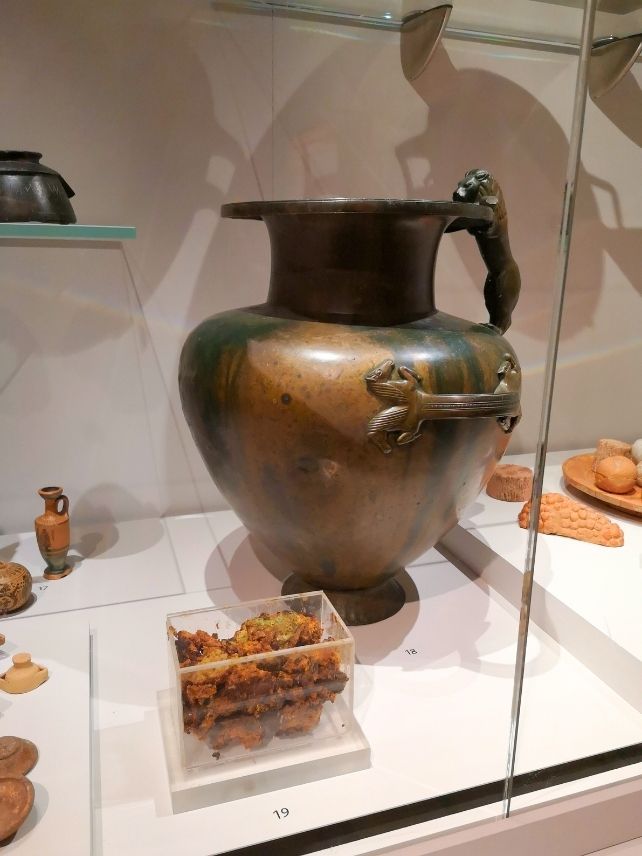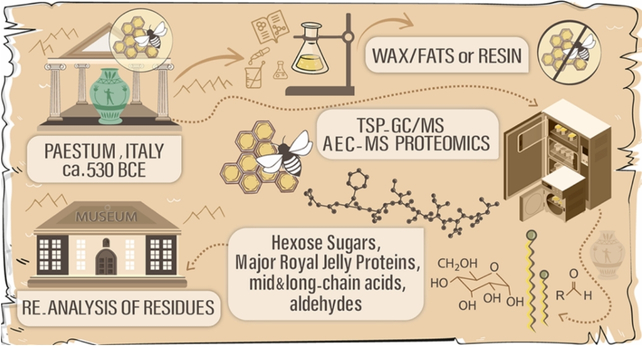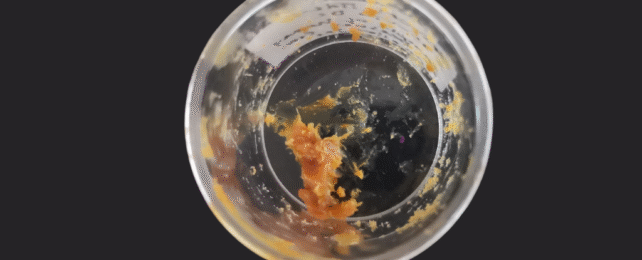A mysterious, orange gunk found in a bronze jar uncovered some 70 years ago at an ancient shrine near Pompeii, Italy, has finally been identified as honey.
After several failed attempts over recent decades, researchers from the University of Oxford unraveled the strange substance's chemical degradation to reveal a sweet offering to an ancient Greek god 2,500 years ago; an appropriate gift, given honey is said to be what Zeus ate as a child.
Archeologist Luciana da Costa Carvalho and colleagues were able to detect a chemical fingerprint nearly identical to modern honey and beeswax using advanced gas chromatography and mass spectrometry techniques.
It was more acidic though, as would be expected from long-term storage where the sugars degrade into furans over time.
Related: First Traces of Ancient Egyptian Hallucinogens Found in Old Jug
This also happens to beeswax, which was identified in one of the previous analyses, but the residue had a much more complicated composition to just be wax, the researchers argue.

While previous analyses were unable to detect any carbohydrates, the new analysis picked up the simple sugar hexose and the products of decomposed saccharides preserved in the corroded copper of the jar.
Excavated in 1954, the shrine at a Greek settlement in Paestum, Italy, was dedicated to an unknown deity. Inside, bronze jars surrounded an empty iron bed accompanied by six hydriai and two amphorae.

"The empty bed and the inaccessibility of the shrine signify that the deity was there," da Costa Carvalho and team describe in their paper, explaining honey is a "symbol of immortality".
Honey was also well known for its use as a sweetener and in medical preparations, cosmetics, and rituals in ancient Greece.
"Ancient residues aren't just traces of what people ate or offered to the gods – they are complex chemical ecosystems," says da Costa Carvalho. "Studying them reveals how those substances changed over time, opening the door to future work on ancient microbial activity and its possible applications."
This research was published in the Journal of the American Chemical Society.
